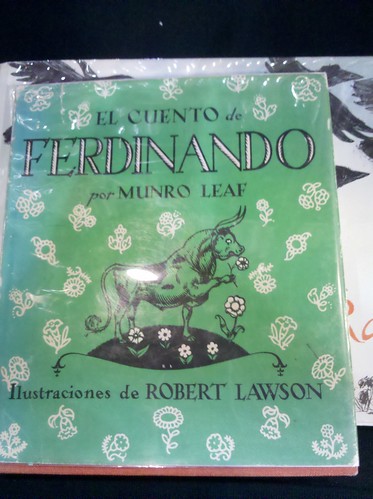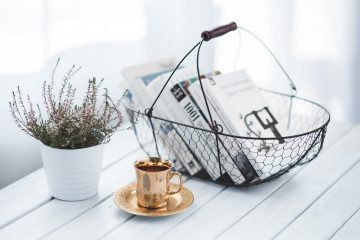Children’s literature for the world language class (Helena Curtain)
I recently joined the Ñandu listserv, a service of Ñandutí, the Center for Applied Linguistics‘s resource center for early (K-8) language learning. As a member of the listserv I get questions and recommendations from other elementary world language teachers. (I don’t currently teach elementary levels formally, but I do a workshop for 18 months to 3-year-olds.)
One of the recent questions was about literature for novices. The person who wrote the article was primarily asking about TPRS novels like those from Blaine Ray and (my favorite) TPRS Publishing and Mira Canion. Accordingly she got several responses with opinions and recommendations along those lines. And then the always creative, bold, wise Helena Curtain, author of the teacher-training mainstay Languages and Children: Making the Match, offered such great advice that I asked (and received) her permission to publish it here.
In a nutshell, Helena’s thought is that we have such little time to build proficiency, especially in elementary programs where instruction time is limited to minutes a week (in my school’s case, at most 45 minutes per week), we should take advantage of the opportunity to encourage valuable character traits as well. Look for books that have “heart” and “human interest,” “have meaningful cultural connections or human insights,” books she calls “deep and rich.”
Helena also echoes my suggestion that you don’t need to think you’re limited by the limits of resources available in the language you teach. Remember, you’re the expert, and the language in the book is probably still too high to be comprehensible input to your students. Just translate the way you want to. I don’t think I have ever used a book in Spanish word-for-word; in fact, I barely use the actual text at all. I have to pare it down to a place where it can be comprehensible input.
Also, Helena suggests that such books can be the “source of many interesting before, during and after language enriching activities.”
And so, here’s the list of books and resources she suggests, and the themes they teach:
Book: The Mixed-Up Chameleon, Eric Carle
Theme: Be happy with who you are
Book: The Rainbow Fish, Marcus Pfister
Theme: Sharing
Book: The True Story of the 3 Little Pigs, Jon Scieszka & Lane Smith
Theme: Different Perspective
Book: Willy the Wimp, Anthony Browne
Theme: Overcoming bullies
Book: Voices in the Park, Anthony Browne
Theme: Point of View
Book: A Chair for My Mother, Vera B. Williams
Theme: Working together for a common goal
Book: First Day Jitters, Julie Danneberg
Theme: Fear of Unknown
Book: Whoever you are, Mem Fox
Theme: Global awareness
Book: No David, Vera Wang
Theme: School behavior
Book: Leo the Late Bloomer, Robert Kraus
Theme: You will shine in your own time
Book: The Little Brute Family, Russell Hoban
Theme: Attitude toward life
Book: The Little house, Virginia Lee Burton
Theme: Advancement isn’t always progress, nature is important
Book: The Story of Ferdinand, Munro Leaf
Theme: Being who you are is important
Book: Where the Wild Things Are, Maurice Sendak
Theme: You can face “monsters”
Book: The Stinky Cheeseman and other Stupid Fairy Tales, Jon Scieszka & Lane Smith
Theme: Is everything what it seems?
Book: The Hundred Dresses, Eleanor Estes
Theme: Teasing
Book: The Giving Tree, Shel Silverstein
Theme: Gratitude
Book: Harold and the Purple Crayon, Crockett Johnson
Theme: Imagination and Creativity
Book: Madeleine, Lugwig Bemelmans
Theme: Getting into trouble
Book: Alexander and the Terrible, Horrible, No-Good, Very Bad Day, Judith Viorst
Theme: Bad days
Book: Charlie and the Chocolate Factory, Roald Dahl
Theme: Curbing Vices
Some sources:
- 10 Important Life lessons from Children’s books by Emily Temple
- 10 Picture Books that Teach Important Life Lessons
- Children’s Books That Teach Life Lessons
Go teach your kids something that really matters for life – what, in my classroom, we call the RBD (Really Big Deal).
Photo: Lili Chin
6 Comments
Comments are closed.





Thanks for the great list. I understand that there are many ways to use books in the classroom, but could you share how you might use one of these stories? I’m thinking that when you “read” (summarize, retell, use Comprehensible Input), doesn’t this activity change from a reading activity to a listening comprehension activity because the students aren’t reading–they’re listening to you, right? While reading do you use questioning techniques to increase/judge comprehension, or do you have other methods? Thanks again!
Great questions!
Actually, the only elementary levels I have not taught are grades 3-5 and most of my elementary activity lately has been in the 18 months to age 6 range, mostly preliterate. So this hadn’t occurred to me as a literacy question. Thus, yes, for me it has been a storytelling (listening, retelling) activity to use children’s literature. But I’m not sure it would be any different if my kids were literate, primarily because I have had such short times with them (as little as 15 minutes per week) that I don’t have time for literacy to be one of my goals. Here’s my use process:
-“Rewrite” the story using comprehensible input and repetitions of target features (like numbers)
-Tell the story repetitively in short chunks (as in first two weeks, just one page, next two weeks, add a page, etc.) – yes, using lots of questions to gauge comprehension and telling with gestures to aid memory
-Encourage students to tell the story with me using gestures
-At end of unit or whatever (I did one story per quarter), during individual assessments see how far each child can get through telling the story themselves (often I use the gestures to help them remember)
I also access the story when we’re working on the same target features in a different context.
[…] From link […]
[…] Children’s literature for the world language class (Helena Curtain) […]
[…] on what Helena Curtain advised, to use literature that’s deep enough to come at life and language in multiple ways, […]
[…] on children’s stories that do more than teach language in the world language class, see this post where I borrow a lot of recommendations from Helena Curtain, as well as this post where I share […]